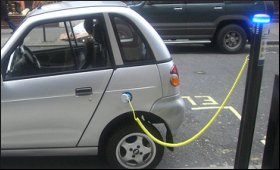|
|
|

|
Govt moving fast on EV adoption despite disappointing Budget
|
|

|
|
| Top Stories |
 |
|
|
|
SME Times News Bureau | 10 Feb, 2020
Even as the Budget 2020-21
disappointed over the lack of any new scheme for faster adoption of
electric vehicles, the government is moving at fast pace to complete the
full scale electrification of transportation in the country.
As
per Department of Heavy Industry data, the government has already
extended support to 8,500 EVs by way of demand incentive amounting to
about Rs 20 crore under Phase-II of its FAME Scheme.
Also, so far
5,595 e-buses in 64 cities have been sanctioned for inter and
intra-city operations across 26 states and union territories. A demand
incentive of Rs 2,500 crore has been given under this head. For charging
infrastructure, the government scheme has spent Rs 500 crore and
sanctioned 2,636 charging stations in 62 cities.
The Fame-II
scheme commenced from April 1, 2019. It follows the success of its
earlier version that created the ground for initial roll out of electric
mobility products in the country.
The main objective of the
scheme is to encourage faster adoption of electric vehicles by way of
offering upfront incentive on purchase of EVs and creation fo necessary
charging stations.
Under the scheme, 12 models of electric motor
of 2W, seven models of electric 3W motors and 11 models of 4W motors
have been registered. The first wave of these registrations could be
seen from the number of launches of electric two-wheelers in the
country.
India is committed to its goal of becoming a 100 per
cent EV market, the timeline may shift ahead by a few years but the
commitment is demonstrated in the slew of announcements made in the
previous Union Budget.
It has already moved the GST council to
lower the GST rate on EVs from 12 per cent to 5 per cent. It has also
made EVs affordable for consumers by extending additional income tax
deduction of Rs 1.5 lakh on the interest paid on the loans taken to
purchase EVs.
Exemption in customs duty on lithium-ion cells to
zero per cent was also announced with an intent to reduce the cost of
lithium-ion batteries in India since they are not yet manufactured
locally.
Through demand creation measures, government is hoping
that investor interest also picks up in indigenisation of EV technology
that will give a push to 'Make in India'.
|
|
|
| |
|
|
|
|
|
|
|
|
|
|
|
|
|
|
| |
| Customs Exchange Rates |
| Currency |
Import |
Export |
US Dollar
|
₹88.70
|
₹87 |
UK Pound
|
₹119.90
|
₹116 |
Euro
|
₹104.25
|
₹100.65 |
| Japanese
Yen |
₹59.20 |
₹57.30 |
| As on 30 Oct, 2025 |
|
|
| Daily Poll |
 |
 |
| Who do you think will benefit more from the India - UK FTA in the long run?
|
|
|
|
|
|
| Commented Stories |
 |
|
|
|
|
|
| |
|